Clarence Thomas Family Flag Flap
AP — Man’s flag flies in face of apartment policy
Every morning since 9/11, Donald Lamp has hung his American flag from the balcony of his Omaha apartment.
The Omaha retirement community where Donald Lamp lives wants him to take his flag down. He refuses, having flown it since the Sept. 11 attacks. Lamp’s son-in-law is Supreme Court Justice Clarence Thomas.
Management of the retirement community where he and his wife live – citing policy about maintaining the appearance of the building’s exterior – wants him to lower the flag for good.
Lamp refuses.
“I’m not about to take it down,” the 89-year-old World War II veteran said.
Lamp is like many Americans who, because of housing covenants, are discouraged from flying their flags this Memorial Day weekend.
What makes Lamp different is that he is the father-in-law of Supreme Court Justice Clarence Thomas.
That makes no difference to Cathy McGrath, general manager of the Arboretum.
“We have a lot of important people here,” she said.
Donald and Marjorie Lamp, whose daughter Virginia is married to Thomas, said they don’t want to use their connection to the judge to influence anybody.
“We don’t go around saying my son-in-law is Clarence Thomas,” he said. “You don’t do that. He wouldn’t like to have us do that.”
An odd coincidence, to be sure. One would think that anti-flag covenants would have no place in Omaha, but I suppose it gets tricky setting forth these policies. Presumably, it allowing the flying of the American flag but not, say, a Nazi banner or something else objectionable–or at least unsightly–wouldn’t pass constitutional muster.

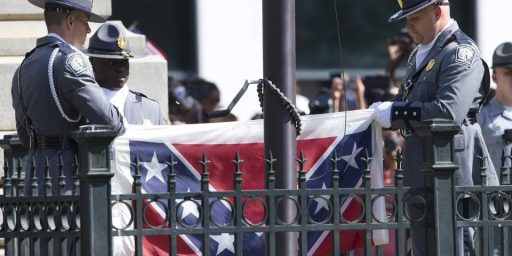
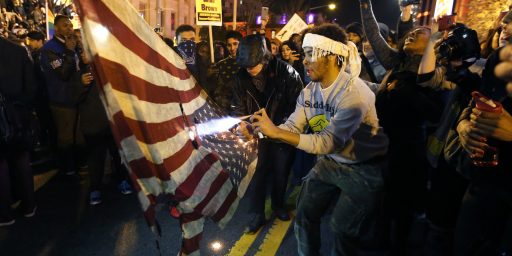
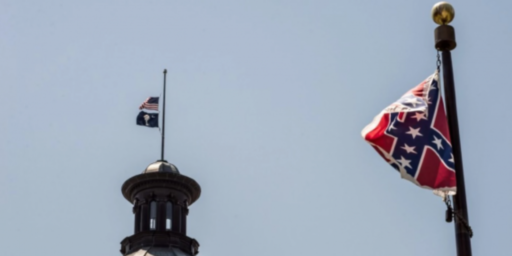
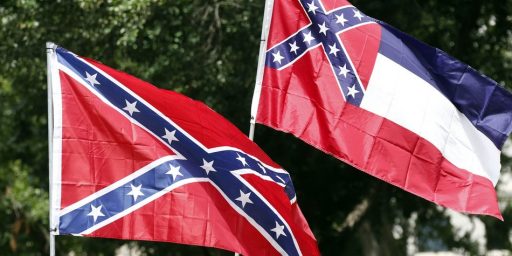
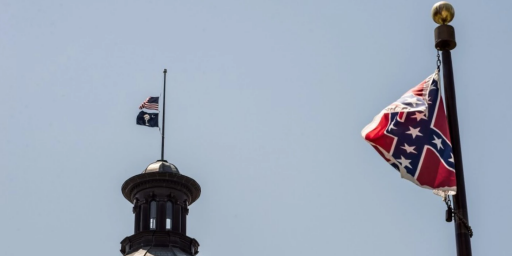
They could quite easily limit displays to flying the American flag only. These communities are private spaces and can set a lot of their own rules, provided there is a type of due process for those living there when new rules are enacted.
These communities are private spaces and can set a lot of their own rules, provided there is a type of due process for those living there when new rules are enacted.
Within limits, yes. But to enforce those rules sometimes requires going to court — and the Constitution would apply to what the court can do in trying to enforce the rule.
If the court can’t enforce the rule, the association is left without leverage in getting residents to comply.
Honestly, the only people who seem to be making a big deal of Clarence Thomas connection are the media. Typical.
It should’nt be a rule in anyones by-laws that prevents a resident from flying an American. But, if the person moved into a residence that had a rule that stated such and signed on to live there, then thats they’re mistake.
/scawlville.com
Would it be up to the courts to try to enforce the CC&Rs of a private community? Isn’t that normally going to be up to the homeowners to police themselves and each other?
Most CC&Rs have some sort of unreasonable restrictions, anyway. Some are enforced, some not. There was actually a rule at my mother’s old condo that she could only have white drapes in her dining area, since those windows were by a common walkway. And there was a rule that no one could grill on their patios or balconies–absurd, and unenforceable as a practical matter.
Would it be up to the courts to try to enforce the CC&Rs of a private community? Isn’t that normally going to be up to the homeowners to police themselves and each other?
And if the person being policed refuses to comply? What recourse does the association have then?
When I lived in Alaska, pretty much every CC&R dispute wound up in court eventually.
In my present neighborhood, we have the CC&Rs but no neighborhood association to enforce them. So far nobody has gone so far outside the rules that anyone would complain. Without an association, though, complaints would be futile.
In theory we could band together and reconstitute the association, but if it needed to try to enforce the contractual provisions that the CC&Rs represent, it would need to get a lawyer and start serving papers.
A homeowner’s association rules are a function of real property law. Normally, the property was originally owned as a whole and a set of restrictions regarding ownership were established to cover all owners who took title afterward. That’s frequently the case in retirement communities where people buy a condo or the like.
The same basic principle applies to easements or other intangible property rights: if I have an easement to cross your land that was established by the prior owner and is recorded, and you take title subject to it, you are bound by the easement. I get to cross your land, even if you don’t want me to.
The same is arguably true here. Restrictions on what community members can and cannot do – as part of a contract they executed – are normally enforceable in court. Thus, restrictions on having trucks in the driveway, sofas in the lawn, or flags on the balcony are all probably enforceable, regardless of who one’s son-in-law is. In one case in Florida I recently encountered, a guy owned the homeowner’s association $150K for attorney’s fees incurred in fighting the guy over having trucks in the yard (he lost, he owed them their fees).
It’s amazing how superficial and incomplete the media (print, radio, and TV) was regarding this incident.
What they did not mention is that the policy was established by a Board elected by the residents and the residents have the right to elect others.
The Board didn’t want the place to look like a frat house and they struggled with issues such as Confederate flags and, heaven forbid, an Oklahoma windsock in the Cornhusker state.
The other thing that the media overlooked is that the facility prominently displays, at two different entrances, large American flags which have spotlights on them at night.
On eleven holidays, they display over 25 American flags during the day.